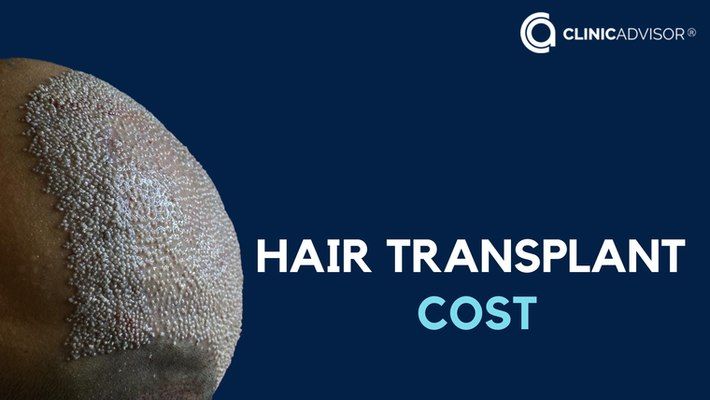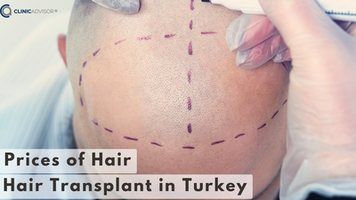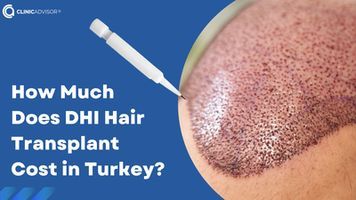Hair loss can be a distressing experience, impacting one’s self-esteem and confidence. Hair restoration procedures, such as hair transplants, can help restore a fuller, more natural appearance. But how much does a hair transplant cost? This blog post will dive into the factors influencing hair transplant costs, how to calculate your own costs, insurance coverage, financing options, and more. Let’s start by understanding the different factors affecting the cost of hair restoration.
Key Takeaways:
|
Understanding Hair Transplant Costs
Hair transplant costs are influenced by various factors, including the type of procedure, the expertise of the surgeon, and the geographical location. The cost of a hair transplant, including follicular unit transplantation (FUT), typically ranges from four thousand dollars to fifteen thousand dollars.
A thorough comprehension of these factors will assist you in making a well-informed decision about hair restoration surgery.
Types of Hair Transplant Procedures: FUT vs. FUE
The two primary hair transplant procedures, FUT and FUE, aim to restore healthy hair to areas affected by hair loss. Follicular Unit Extraction (FUE) is a more advanced hair transplantation procedure and can be estimated to cost approximately 30% – 40% more than Follicular Unit Transplantation (FUT). Both procedures offer natural-looking results, as the transplanted hair is one’s own, and can also address female pattern hair loss.
If the patient suffers from male pattern baldness, which causes a substantial amount of hair loss in a certain area, FUT could be the most economical option, as it targets hair follicles in that specific region.
Surgeon Skill and Experience
The aptitude and experience of the surgeon can influence the efficacy of the procedure and the total cost. A surgeon’s skill is paramount in determining the outcome of hair transplant procedures, as an accomplished surgeon guarantees natural results and gradually develops transplanted hair.
Opting for a surgeon with extensive experience, a positive reputation, and validated qualifications is advisable. Further, researching the surgeon’s patient outcomes before finalizing your choice is beneficial.
Location and Facility Fees

Location and facility fees can contribute to an increase in the overall cost of the procedure. The cost of a hair transplant can range from a variance of up to 400%, depending on the location and experience of the physician.
Generally, fewer clinics or doctors in an area will lead to a higher cost per graft, while an increased number of clinics in an area can result in a decrease in the price per graft.
When planning your budget for a hair transplant, don’t forget to factor in recovery costs, which include medications and follow-up appointments.
Calculating Your Hair Transplant Cost
 Calculating hair transplant cost per hair graft
Calculating hair transplant cost per hair graft
Your hair transplant cost can be calculated by following these steps:
Identify the number of grafts you need.
Calculate the number of grafts needed by multiplying the number of fists of the hair loss area by 1350.
Multiply the result by the per/graft price.
The typical expense per graft for hair transplantation in the US is between $2 and $10 per graft. The number of grafts required for various stages of hair loss may differ, so it is essential to consult with a hair restoration specialist to determine your specific needs.
Determining the Number of Grafts Required
The precise quantity of hair grafts needed for a hair transplant is contingent upon the individual’s desired outcome and the degree of hair loss. The range of grafts required generally falls between 1,200-1,500.
Getting a larger number of grafts in a single session can be more cost-effective per graft, potentially reducing the total cost.
Per Graft Pricing
Per graft pricing is a pricing model utilized by numerous clinics for hair transplantation, involving charging a fixed fee for each graft, which can vary from $2.50 to $8 depending on the number and type of grafts. The customary cost per graft for a hair transplant typically ranges from $2 to $10.
This pricing method provides a clear and adaptable way to determine hair transplant costs, offering patients the flexibility to choose what suits their needs best.

Insurance Coverage and Hair Transplants
In most cases, hair transplant surgery is considered an elective surgery, and the costs must be borne by the patient, as insurance usually does not cover the costs for cosmetic procedures such as hair implants or hair plugs. However, there are exceptions where insurance might cover hair transplant surgery, such as reconstruction due to an accident or injury.
Standard health insurance policies typically do not cover the cost of a hair transplant if it’s for cosmetic reasons.
Financing Options for Hair Restoration
 For those who cannot cover the cost of a hair restoration procedure upfront, there are financing options available. Medical financing companies, such as Prosper Healthcare Lending, DiStefano Hair Restoration, and Van Scoy Hair Clinics, offer payment plans with interest rates ranging from 8.99% to 20.90% Annual Percentage Rate (APR).
For those who cannot cover the cost of a hair restoration procedure upfront, there are financing options available. Medical financing companies, such as Prosper Healthcare Lending, DiStefano Hair Restoration, and Van Scoy Hair Clinics, offer payment plans with interest rates ranging from 8.99% to 20.90% Annual Percentage Rate (APR).
Researching and comparing various financing options to secure the most favorable rate tailored to your needs is fundamental.
The Value of Investing in Hair Restoration
Hair restoration is a significant investment with the potential to transform your life, given its permanent outcome, natural-looking results, and no requirement for additional maintenance. The long-term advantages of a successful hair transplant include:
Reduced upkeep
An aesthetically pleasing appearance
Improvement of appearance
Being more cost-efficient than alternative solutions
A successful hair transplant can also positively influence self-esteem and confidence by providing a fuller, thicker appearance to thinning hair, increasing satisfaction with one’s appearance, and eliminating baldness to improve aesthetics.
Choosing the Right Hair Transplant Surgeon
 Choosing the right hair transplant surgeon
Choosing the right hair transplant surgeon
The success of the procedure heavily depends on choosing the right hair transplant surgeon. A qualified surgeon should possess:
A medical degree (MD or DO)
Specialization in Plastic Aesthetic and Reconstructive Surgery
Certification by the American Board of Hair Restoration Surgery (ABHRS) or board certification in hair transplant surgery.
When evaluating patient testimonials, pay attention to reviews that detail:
the surgeon’s skill
the quality of the results
the overall experience
reviews from patients who have had similar hair loss patterns to your own.
Preparing for Your Hair Transplant Procedure
 Preparing for hair transplant
Preparing for hair transplant
Being well-prepared is a prerequisite before undergoing a hair transplant. This includes:
Having a thorough consultation and evaluation with a hair transplant surgeon to assess your hair and scalp’s condition
Recognizing any underlying medical conditions that may impact the surgery
Discussing your expectations and goals
The hair transplant procedure typically lasts between 4 and 8 hours and is performed under local anesthesia.
Consultation and Evaluation

Undergoing a comprehensive consultation and evaluation with a hair transplant surgeon is key to assessing your suitability for the procedure. The consultation usually includes:
A non-binding hair and scalp analysis
Discussion of your desired results
Available treatment options
Advantages and disadvantages of each option
Associated costs
Recovery period and timeline
Eligibility criteria
Addressing any questions or concerns you may have
The Procedure
A hair transplant procedure generally involves several steps, including consultation, preparation, donor hair extraction, graft preparation, recipient site creation, graft placement, and post-operative care. The procedure is performed under local anesthesia, enabling the patient to remain conscious and attentive, while not experiencing any discomfort during the operation. Various tools, such as Sapphire Blades, FUE Matic machine, Classic Punch, Surrounded Punches, coated Punches, and Titanium Nitride Coated instruments, may be used during a FUE hair transplant procedure.
Recovery and Aftercare
Proper recovery and aftercare post a hair transplant play a key role in achieving the best results. Typical side effects associated with a hair transplant procedure include:
Swelling or edema in the forehead area
Scarring
Pain and discomfort
Folliculitis
Excessive hair shedding
Formation of small scabs on the treated areas of the scalp
The recovery time for a hair transplant surgery can vary, but it is generally expected to take 2-14 days for complete healing and resolution of swelling, with the transplanted hair beginning to regrow within a period of 4 to 5 months. After a hair transplant, it is important to:
Strictly follow the surgeon’s instructions
Take the prescribed medications
Avoid cigarettes, cigars, e-cigarettes, nicotine patches, alcohol, Vitamin E, fish oil, and diet pills.
Consult with your hair transplant surgeon or specialist for individual product recommendations, such as:
Kmax Healing Hair Transplant Post-Surgery Foamer Shampoo
Baby shampoo
Herbal shampoo
Argan oil
Sesame oil
Coconut oil
Summary
In conclusion, hair transplant costs can vary widely depending on factors such as the type of procedure, surgeon experience, and location. By understanding these factors, calculating your own costs, and exploring financing options and insurance coverage, you can make an informed decision about hair restoration surgery. The investment in hair restoration can provide a lifetime of benefits, improving self-esteem, confidence, and overall appearance. With the right preparation, surgeon selection, and proper aftercare, a hair transplant can be a life-changing solution for those experiencing hair loss.
Frequently Asked Questions
How long do hair transplants last?
Hair transplant results can start to be seen after a few months with the full results visible in 6-9 months. New hair growth should continue for a lifetime.
How much does 3000 hair grafts cost?
The cost of 3000 hair grafts typically ranges from $6,000 to $30,000, depending on various factors. These include the number of grafts required, the method of implantation used and the fees of the surgeon.
How much does 5000 hair grafts cost?
5000 grafts hair transplants in North American and European countries typically cost between $5,000 and $16,000.
How much does 2000 hair grafts cost?
2000 hair grafts with FUE can cost between $8,000 and $20,000, depending on the clinic, surgeon, and number of grafts needed.
How much does a hair transplant cost?
On average, a hair transplant including FUT can cost anywhere between $4,000 and $15,000.








